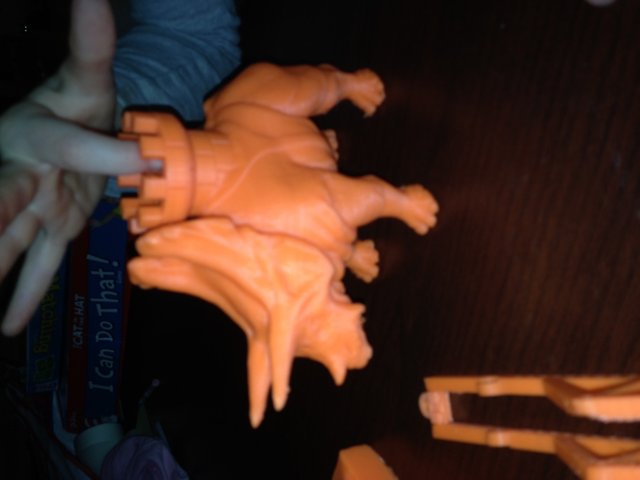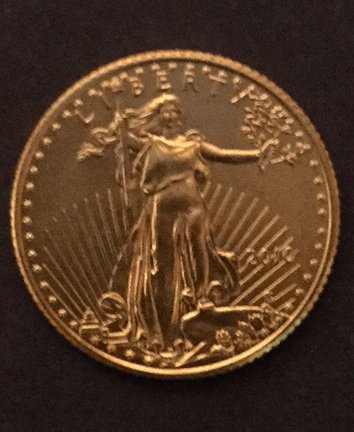Exploring the New Economy - 3D printing tips for Beginners
3D printing is a very exciting technology. At the height of its potential 3d printer technology promises to decentralize the manufacturing of everything from children’s toys to buildings. On the other end of that spectrum of potential, 3d printer technology also offers frustration due to the complications of being involved in the early stages of a technology. As humanity moves into the future we’ll move closer towards that positive potential while simplifying the complications, that is the whole point of the open-source movement after all. Myself and all of the other adventurous souls out there struggle and strive and then share the useful knowledge we’ve learned so others can progress through the learning process quicker and push the envelope even further.
One thing that seems fairly consistent in the world of the desktop 3d printers is that each printer is unique. The information and settings I’ll share in this piece are specific to the Qidi Tech X-One so there is no guarantee they also provide satisfactory results on a different model printer. They may be a good place to start, but only experimentation with your own machine can be expected to properly calibrate your print settings. Even others who have an X-One may get different results due to differing environmental conditions such as temperature and humidity, these things are very sensitive. I recommend the careful recording of your print settings while using some smaller calibration models to find the proper settings for your own machine. It’s not as fun as printing out rocket launcher toting dinosaurs for my children, but it is time well spent.
The filament you use will be the first item to consider. My printer came with a spool of PLA filament which I found very easy to print with. This material seems much more forgiving and less prone to warping than the ABS I’m currently using. It isn’t as durable as the ABS filament unless you spend some time refining the finished print, but it’s the least complicated way to start. Some good information on the positive/negative attributes of the common feed stock for desktop printers were useful in my education; http://nicklievendag.com/filament-guide/
With the ABS filament I’ve found the following tweaks to the stock Slicer settings drastically help print quality;
Build Platform cooling fan turned off completely stopped the warping issues I initially had with ABS filament. This was a big one.
Build Platform leveled to approximately 75% of the Layer height is the sweet spot for ABS on my machine. My most recent print had a layer height of .08mm and I used a feeler gauge to level the platform to .063mm. I still need to experiment with this to see if I can reduce the scraping that occurs at the first couple layers as this currently creates some rough edges that need cleaning after the print is finished but doesn’t otherwise effect the final product.
Maximum output for the initial lines set down helps create a strong and even first layer. This is a stock setting with the Qidi slicing software (.3mm layer height) and I tweaked this to .32mm which is the recommended 80% of nozzle size I came across in my research.
240 degree nozzle temperature with 100 degree build platform temperature have produced the best results provided the cooling fan is off. These same temperatures resulted in significant warping while the fan was on.
Those four items basically sum up what I’ve learned over a dozen failed prints and several days worth of printing time, hopefully it flattens the learning curve just a bit for others getting into this field and makes the process less tedious.
For a beginner looking to purchase their first printer I would strongly recommend the Qidi Tech X-One. It is very sturdy and well built. It was simple to disassemble and put back together when I wanted to find out how it was made and the software is about as user friendly as possible given the large number of settings that can be modified. While in the slicer software there are pop up windows that come up over each setting which give a quick and convenient description of what that setting does, why it’s important, and some good starting points to adjust to based on how your print needs to perform. The only complaint I can find so far is the spool holder which I plan on replacing with one I build myself to allow for more convenient filament changes. All told, this is still a 5/5 rated machine/software package at the current price of <$500.
If that price tag is over your budget, don’t fret. There are plenty of other options out there which come in cheaper than the X-One. Some DIY kits being under $100 which bring 3D printer technology into price ranges affordable for just about anyone. A couple interesting posts on Steemit could easily translate into the funds needed to purchase your first 3D printer. This is the beginning of the New Economy, ingenuity and quality of content are more important than the capital available for investing for those starting out.
I’ll be regularly creating models, many of which I’ll offer at no charge on sites like http://www.thingiverse.com/ that can be useful and decorative around the home or workshop. The 3D modeling aspect of this technology is another area that has a steep learning curve, but a little diligence and perseverance are all that are needed to break through the barrier of competence. I also believe the industry of 3D modeling will become a lucrative way to earn some income as humanity slips into the future. The faster 3D printing spreads the more need for functional and decorative models there will be. The beautiful part about modeling is you can get a lifetime of income off your designs if they well made. Artists as well as interior decorators should take note of this, getting in on the ground floor of the industry as promising as this could offer a lot of reward with a very low barrier to entry. As modeling software like Blender is open-source and free to use, the software learning curve is the only real barrier to entering this field for anyone interested. Services like https://www.3dhubs.com/ allow you to rent printers locally to print your models so you don’t even need to purchase a printer yourself, although you’ll learn some valuable skills and potentially save money in the long run if print in-house.
Just as block chain technologies like steemit and bitcoin are replacing the censored media and centrally controlled money supplies, 3D printing will help to replace the big box one size fits all economy we’re currently in. We’re not quite to that flash point yet, but we’re getting there. For those of us lucky enough to be living and contributing to this change it’s hard to see this big picture in the daily grind but we’re making progress. Remember these days where struggle and frustration are so common, decades from now they will make our victory all the more sweet.

